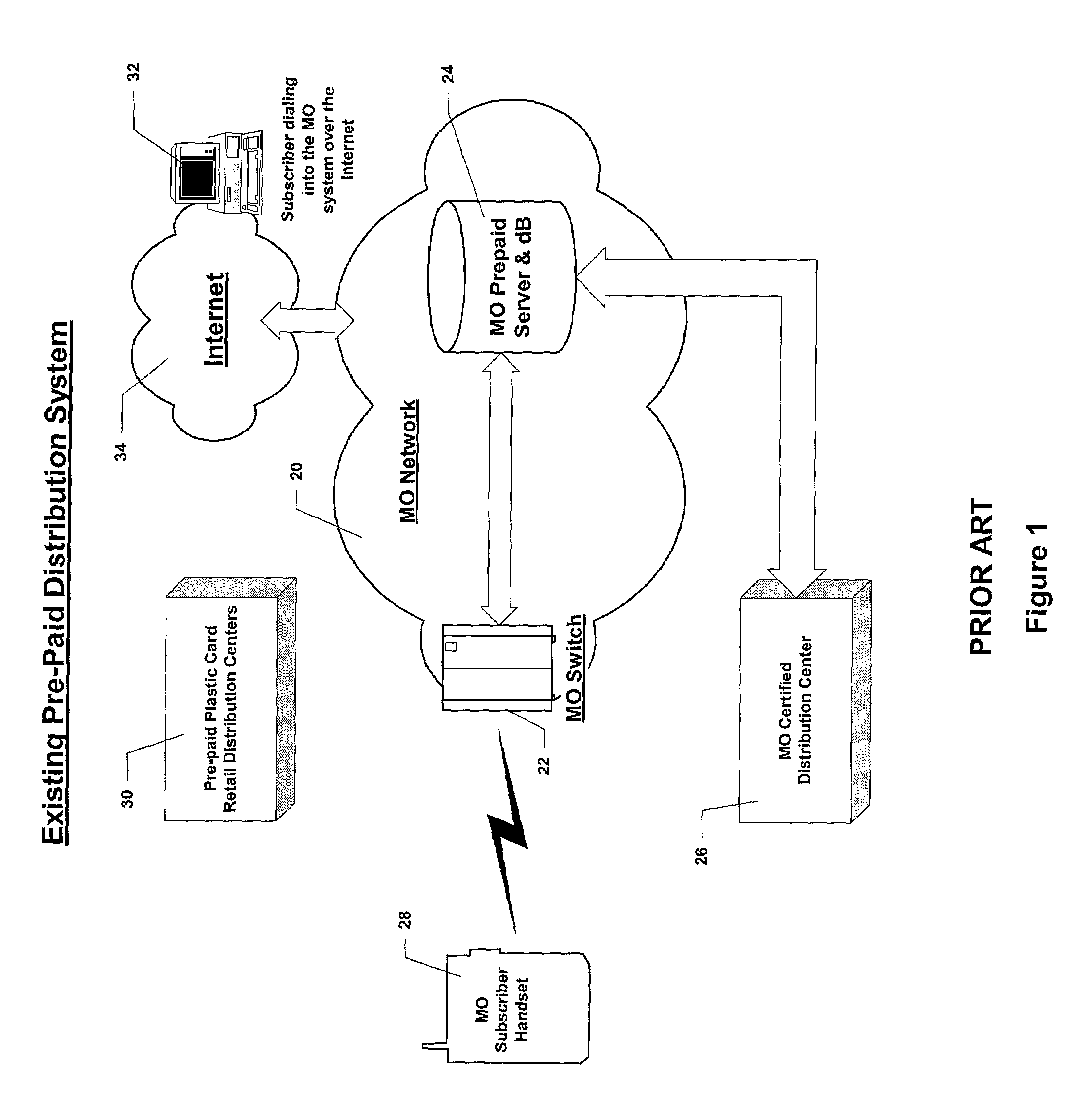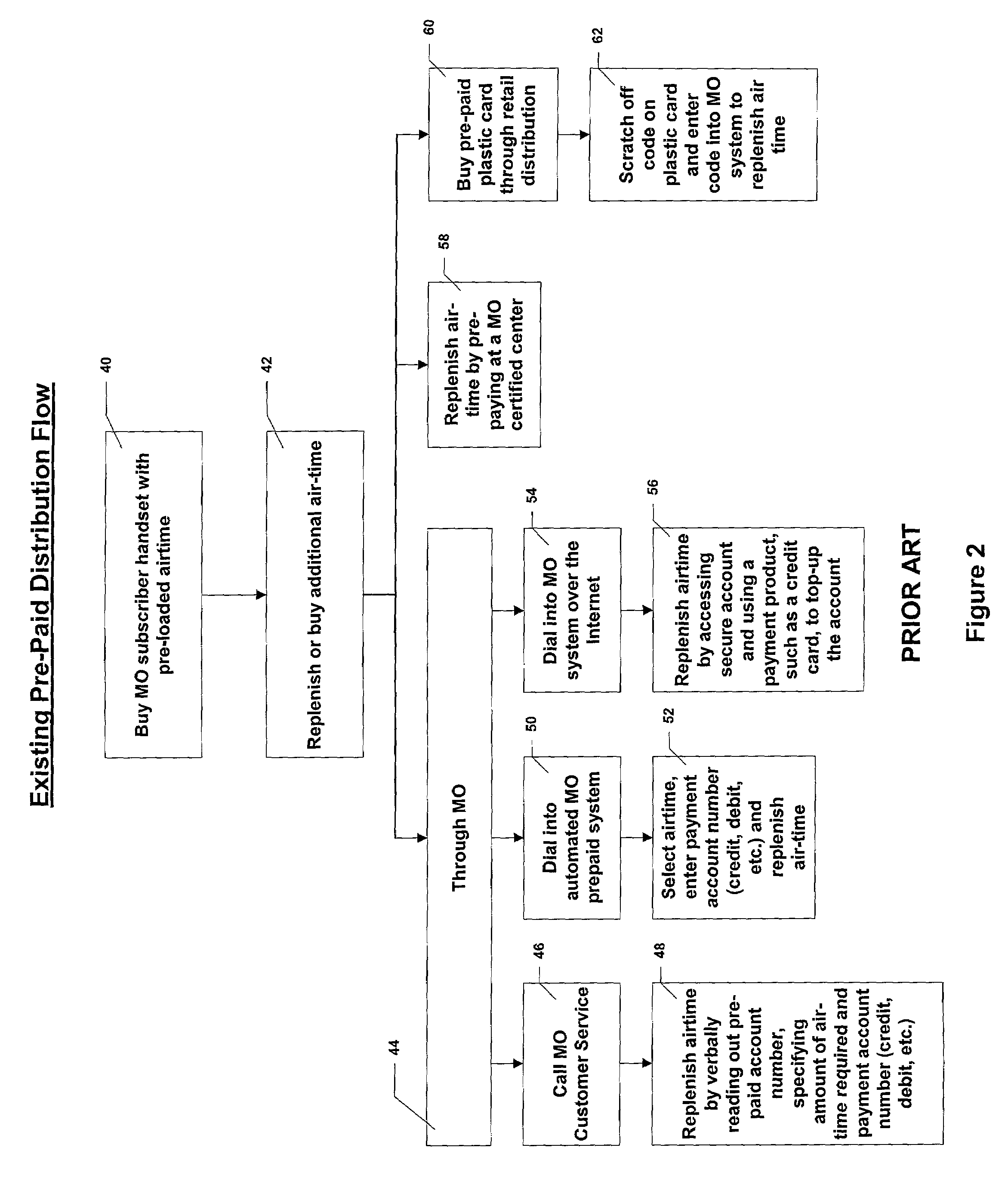If these minutes are not used, they expire and the subscriber loses the value associated with the unused airtime.
This typically involves a dedicated session between the subscriber and the customer service representative, which is cumbersome, labor intensive and expensive.
There are several disadvantages to present methods of
topping-off pre-paid accounts.
The manual
system incurs additional labor costs, since it requires a dedicated customer service representative to walk the subscriber through the entire setup and top-up process.
Add to this, the
credit card issuer's fees for the transaction (“
Card Holder Not Present” (CHNP) transactions), and the overall cost incurred by the mobile operator to support this distribution channel is very high.
But this process has proven to be extremely cumbersome.
Thus, errors occur, especially during the setup operation, when the user must alternatively hold the
handset near the ear to hear the VAR
system and then hold it in front of the eyes to dial appropriate numbers.
This eventually drives impatient subscribers to less cumbersome distribution channels, which in turn have a higher cost associated to the model for the mobile operator.
Certified MO distributors typically provide over-the-counter service for pre-paid subscribers, which incurs retail costs, in addition to the costs mention above.
Because there are only a limited number of certified centers, the overall reach of such distribution centers is limited.
Since many of these certified centers have a direct hook-up into the MO's back-
end system, adding on such centers require more direct hook-ups, increasing the potential of fraud and adds to the accounting and
inventory management costs.
Neutral distributors who support several mobile operators' products, typically charge a high margin for shelf space, increasing the distribution cost for the mobile operator.
The reach of these channels, along with the ability to use cash, are the top most reasons for its popularity, but are also the most expensive for the mobile operator to support.
The mobile operator incurs some cost for producing the plastic cards, packaging and distributing them.
In addition, the mobile operator incurs costs for tracking and managing physical inventory, ironically for a non-physical or virtual product such as airtime.
Retailers charge the mobile operators a very high margin for the distribution of these plastic cards, as they take up expensive shelf space.
Cash handling expenses, and
credit card fees add to the overall cost, along with other cost elements typical to a retail environment.
The cost these transactions renders existing credit and debit transaction systems impractical for “sub to single digit dollar” transactions, typically referred to as micro-payments.
Consequently, the existing stored value payment systems have not been able to successfully cater to the eCommerce and mCommerce environments.
In the
brick and
mortar retail environment, again the lack of a truly global interoperable and secure system has been responsible for less acceptance by merchants and consequently less penetration among users.
The existing systems have also failed to provide an effective
payment system for minors, who typically do not qualify for a credit or
debit card, for credit challenged individuals and for person to person transactions.
Because existing credit and debit transaction systems are impractical for micropayments, cash is the predominant form of payment.
Cash may be cumbersome, subject to theft or loss, and in some cases owing to the lack of local currency, impractical and extremely inconvenient.
In terms of the merchants, owing to the
high potential of fraud and theft, cash transactions are associated with a very high cost of handling and collection.
 Login to View More
Login to View More  Login to View More
Login to View More 


